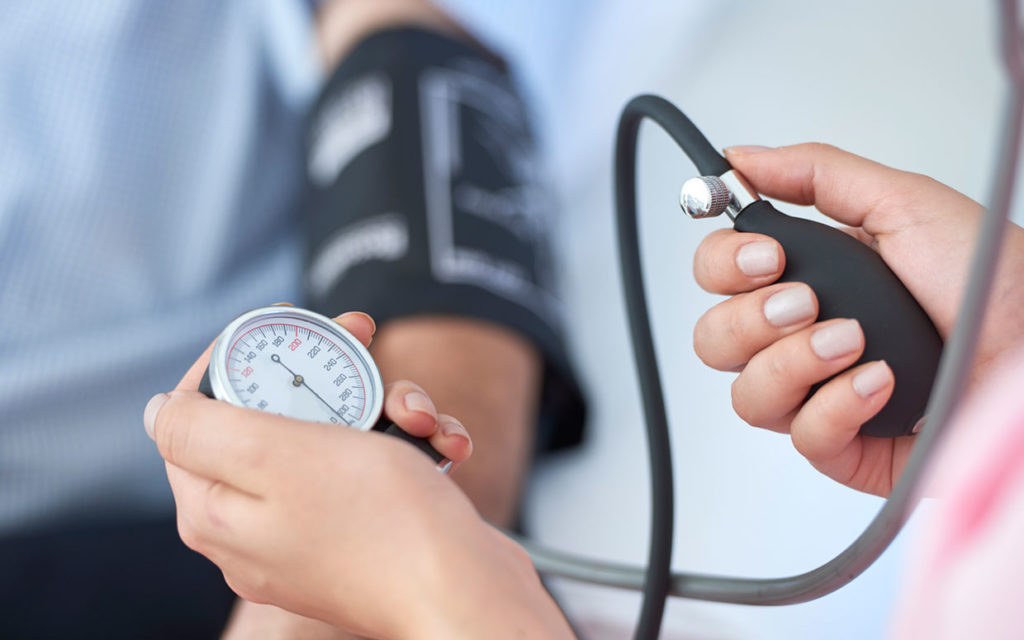
Persistent uncontrolled high blood pressure is a significant risk factor for a number of potentially fatal health conditions including heart attack, stroke, diabetes, and kidney failure.
Measuring Blood Pressure
Blood is pumped through the body’s blood vessels by the beating of your heart. Each beat represents a contraction of your heart muscles that pushes the blood through your arteries. That push exerts pressure on the walls of the blood vessels as a wave of blood is moved along. Between beats the heart is not actively pushing the blood and so, for that period of time, there is less pressure exerted on the walls of the blood vessels.
A device is used to measure the pressure exerted on the walls of the blood vessels. The result of the measurement produces two numbers that are usually written as a fraction like 116/78. This is usually read as “one sixteen over seventy-eight.” The top number represents the pressure resulting from the heart contraction and is referred to as the “systolic” pressure. The bottom number represents the lower pressure between beats and is called the “diastolic” pressure.
Physical Factors Affecting Blood Pressure
There are essentially two physical factors that impact blood pressure: the force with which the heart muscle pumps the blood into the arteries and the elasticity or flexibility of the walls of the blood vessels. Blood pressure may also be impacted if there is material stuck to the walls of the blood vessel which would constrain the flow and thus increase the pressure.
For the most part, the heart pumps blood with a fairly consistent force. In a high stress situation, where the body has dumped adrenaline into your system in a “fight or flight” response, the heart muscles might pump more vigorously and thus increase the pressure. But this is typically a short-lived phenomenon. If such a situation persists over a protracted period, the heart itself might incur some damage.
On the other hand, the heart may not have sufficient strength to pump the blood into the arteries at an adequate pressure level. This situation is known as heart failure. There are several physiological conditions that may lead to heart failure (including protracted periods of high stress which overloads the heart muscles) and there are varying degrees of heart failure.
However, the biggest factor affecting blood pressure is the flexibility of the blood vessel walls, followed closely by the extent to which a blood vessel may have deposits that constrain blood flow. It is this constraint on the flow of the blood through the blood vessels, whether by blockage or blood vessel inflexibility, that represents a significant health risk and is identified by high blood pressure readings. Healthy blood vessels are very flexible and can accommodate the surges of blood flow by easily expanding as a blood pressure wave moves through. Unhealthy blood vessels are more rigid or are blocked to some extent, resulting in a higher systolic pressure reading.
What Constitutes High Blood Pressure?
It might be easier to assert what constitutes “normal” blood pressure. According to the American Heart Association, normal blood pressure has a systolic reading of less than 120 and a diastolic reading of less than 80. Higher readings for either or both of these values represents risk, with higher numbers representing higher risk. Refer to the accompanying chart.
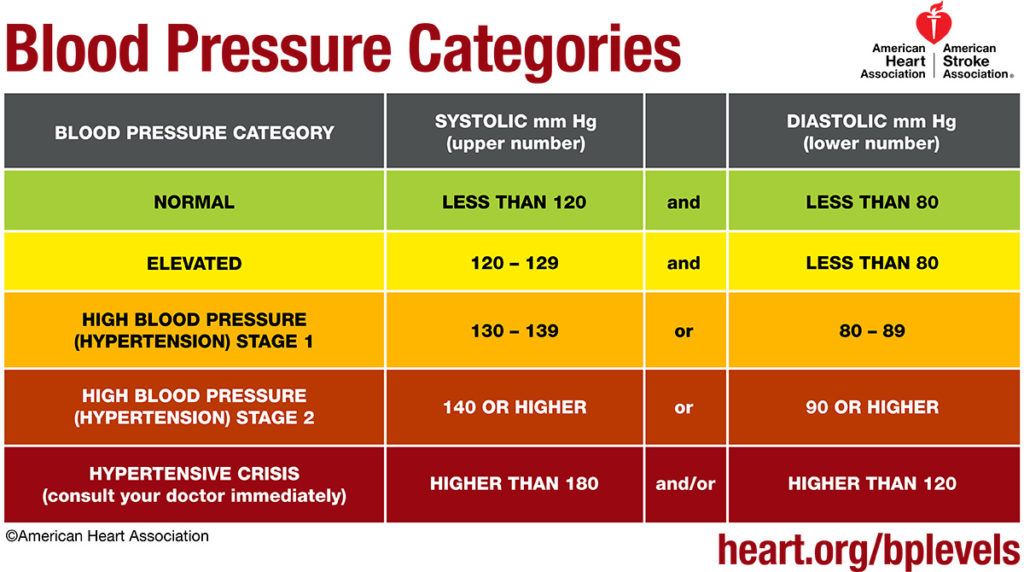
Preventing High Blood Pressure
The focus of most high blood pressure prevention strategies is to reduce any blockages of the blood vessels and to maintain the flexibility of the blood vessel walls. This maximizes the flow of oxygen to the cells throughout the body by maximizing blood flow.
According to the World Health Organization (WHO), a United Nations body, there are six things you can do to prevent high blood pressure.

- Reduce Salt Intake
WHO recommends a daily maximum of five grams (5000mg). However, most other authorities recommend less than half of that, with some stating that 2300mg should be the maximum while other authorities set the bar at 1200-1500mg (and some much lower than that).
Salt is essential to certain body functions. However, excess amounts have a negative impact. Too much salt causes the body to retain excess fluid which increases the pressure on blood vessels and other organs in the body.
- Eat Fruits and Vegetables Regularly
In addition to providing necessary nutrients, fruits and vegetables provide a natural source of fiber. This helps remove toxins from the body and aids in the stabilization of blood sugar levels. All of these things together promote healthy blood vessel maintenance.
- Avoid Saturated Fats and Trans Fats
Trans Fats are not a natural material and are considered by the body to be a harmful toxin. Trans fats interfere with a variety of the body’s natural functions.
Some saturated fat is used by the body to maintain good health. However, excess amounts of saturated fats can lead to the significant production of “bad” cholesterol in the blood stream. This “bad” cholesterol can get deposited on the walls of the blood vessels and, over time, can cause a buildup that constrains blood flow. This pushes up the blood pressure readings.
- Avoid Tobacco Smoking
Tobacco smoke contains a nasty combination of chemical toxins. This interferes with the transfer of oxygen from the lungs to the red blood cells. This means that the body has to work harder to get the necessary volume of oxygen carrying red blood cells to the cells of the body. Higher blood pressure can result from this extra effort to push blood through the system.
In addition, the body’s glutathione reserves are used to try to remove these toxins from the body. Lower glutathione levels can lead to problems as described below.
- Reduce Alcohol Consumption
As with tobacco smoke, the body considers alcohol to be a toxin. Processing significant amounts of toxins reduces glutathione levels and puts stress on the body, including the circulatory system. Again, lower glutathione levels can lead to problems as described below.
- Be Physically Active Every Day
Vigorous physical activity exercises not only your major muscle groups, it also exercises the heart muscle. This in turn causes the blood vessels to expand and contract more frequently which enhances flexibility in the vessel walls. Flexibility is a healthy desirable condition for your blood vessels.
And I would add two more:
- Reduce Excess Body Fat
Some body fat is necessary. However, excess body fat exerts additional pressure on not only the various vital organs of the body but also puts additional pressure on the blood vessels, reducing their natural flexibility. There is a reason that we see a high correlation between high body fat levels and high blood pressure.
- Increase Intracellular Glutathione Levels
Studies have shown that abundant glutathione in the cells can reduce the levels of Low Density Lipoprotein (LDL), also called the “bad” cholesterol. This kind of cholesterol is known for attaching itself to blood vessel walls. The resulting build-up can increase blood pressure. Increasing intracellular glutathione is a drug-free way to reduce LDL and thereby promote healthy blood pressure levels.
Summary
High blood pressure is a significant risk factor associated with a number of potentially serious (even fatal) health conditions. There are things you can do to prevent high blood pressure and thereby avoid this real risk to your wellbeing and your life. Most of these things are lifestyle choices that are well within your control.
#health #heartdisease #highbloodpressure
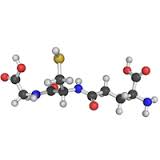
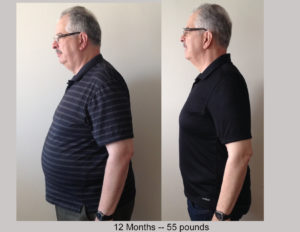 A few years ago my daughters started expressing concern for my health. They nagged and cajoled at every opportunity, telling me I needed to get in better shape. I knew they were right but I didn’t want to go to the effort to change. I would huff and puff going up a flight of stairs. I admit that I was a little overweight. (Alright, I’ll tell the truth. I was obese.) I paid a premium price for most of my clothes because I had to shop in a large men’s specialty clothing store.
A few years ago my daughters started expressing concern for my health. They nagged and cajoled at every opportunity, telling me I needed to get in better shape. I knew they were right but I didn’t want to go to the effort to change. I would huff and puff going up a flight of stairs. I admit that I was a little overweight. (Alright, I’ll tell the truth. I was obese.) I paid a premium price for most of my clothes because I had to shop in a large men’s specialty clothing store.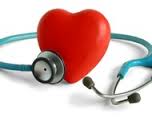 Recently I listened to an interview with a reputable heart specialist. What he had to say was so important I knew I had to share the information. What follows contains so much direct quote and paraphrase of things said in the interview that I am sure it is violating somebody’s copyright. I hope they will understand. This is not a transcript of the interview; it contains excerpts of key messages.
Recently I listened to an interview with a reputable heart specialist. What he had to say was so important I knew I had to share the information. What follows contains so much direct quote and paraphrase of things said in the interview that I am sure it is violating somebody’s copyright. I hope they will understand. This is not a transcript of the interview; it contains excerpts of key messages.